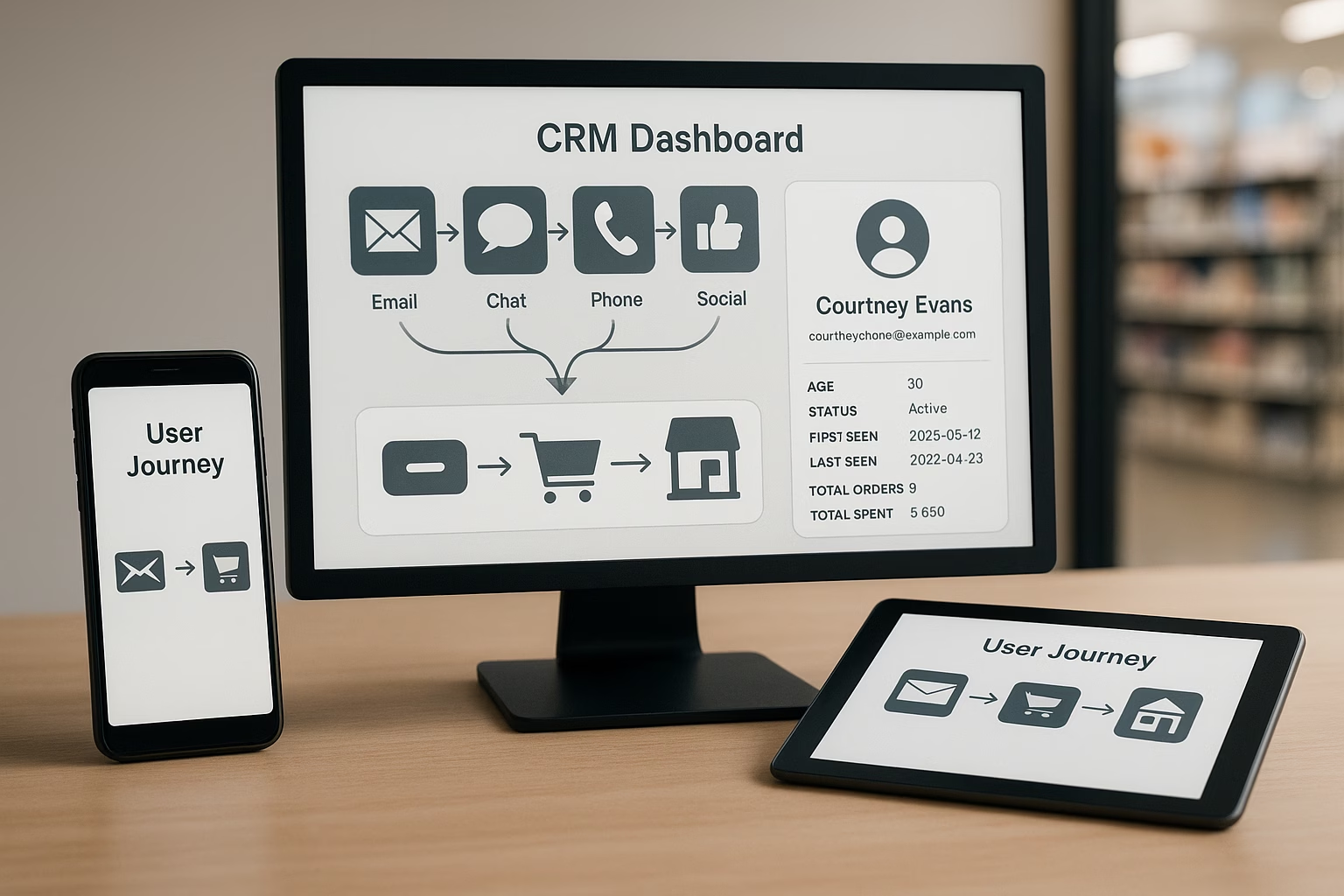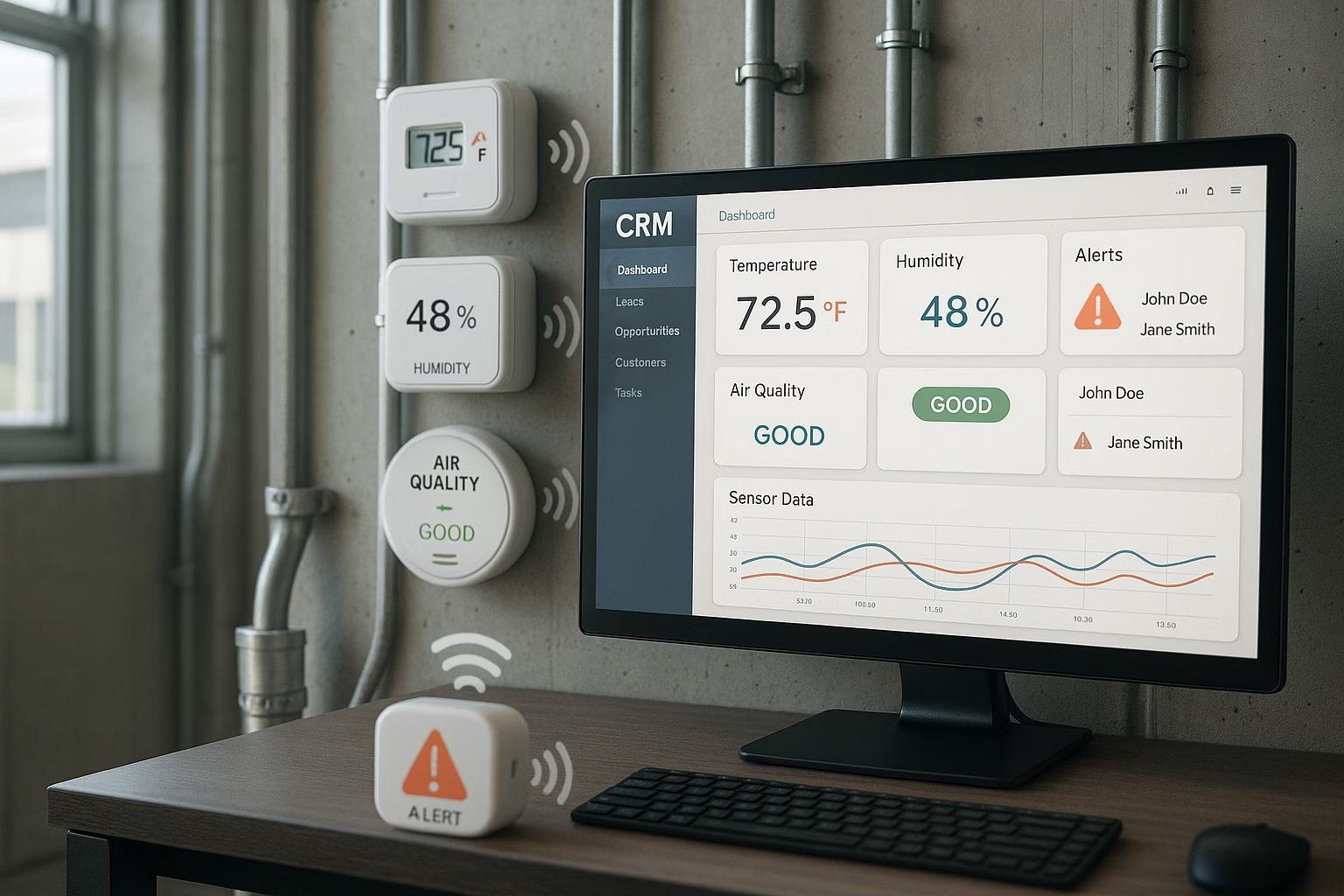Two years ago, Salesforce introduced Agentforce, its bold move into the world of AI-powered agents. The promise was as exciting as it was ambitious: to move beyond generative AI chat and deliver digital workers capable of reasoning, taking action, and completing tasks across the Salesforce ecosystem.
At Sirocco, we’ve been tracking these developments from day one. We’ve also invested in upskilling our teams, so we’re ready to help our customers adopt Agentforce quickly and responsibly. Because while Agentforce started as a big idea, it has rapidly evolved into one of the most talked-about innovations in CRM.
We understand companies everywhere are under pressure to increase efficiency, reduce costs, and improve customer experience (often all at once!). That’s why AI agents are no longer a distant vision. They are becoming a core part of business strategy. The real question for leaders is no longer if Agentforce works, but how it can deliver measurable value inside your organization.
From launch to maturity: The Agentforce journey so far
Agentforce’s evolution has been remarkably fast, reflecting both the pace of innovation in AI and Salesforce’s determination to lead in the enterprise space. In just two years, it has gone from a bold idea to a platform tested, debated, and increasingly deployed by global businesses. Here’s how the journey has unfolded:
September 2024: Agentforce 1.0 Launch at Dreamforce
Salesforce introduces Agentforce as its AI agent platform, designed to go beyond conversational AI and bring autonomous digital workers into the enterprise. Marc Benioff describes it as “the next era of enterprise AI,” a way for businesses to free employees from routine tasks. Analysts at Forrester call the launch “ambitious but inevitable,” noting that enterprises were already seeking automation that could act, not just advise.
October 2024: General Availability
Salesforce rolls out Agentforce more widely. Early adopters experiment in service and support, where the ability to automatically triage and resolve simple cases shows quick wins. A Gartner analyst notes that Salesforce “may have an adoption advantage because Agentforce sits inside workflows customers already rely on daily,” unlike standalone AI tools.
December 2024: Agentforce 2.0
Positioned as a full digital labor platform, Agentforce 2.0 expands functionality with customizable skills, stronger reasoning capabilities, and MuleSoft-powered integrations. By year’s end, Salesforce reports closing more than 1,000 paid Agentforce deals. Community leaders, however, warn of a “hype-to-reality gap,” saying that broader deployments will need strong governance.
Early 2025: Expansion and real-world testing
Salesforce deploys Agentforce on Help across its own support channels. Within months, the AI agents handle over one million support requests with 93% accuracy. Customer feedback shows faster resolutions and fewer escalations. One Fortune 500 CIO comments publicly that the tool “isn’t perfect, but it’s already saving us thousands of hours per quarter in support time.”
June 2025: Agentforce 3.0
Salesforce unveils its most enterprise-ready version yet. New observability dashboards let leaders monitor agent performance, escalation paths, and business outcomes in real time. Governance tools build trust and reduce risk, while integrations run deeper across the Salesforce ecosystem. Analysts highlight the release as a turning point, moving Agentforce from experimentation to production-grade AI for the enterprise.
In less than two years, Agentforce has evolved from bold announcement to credible platform. Enterprises are already reporting measurable ROI in service and efficiency gains across teams. At the same time, analysts stress the importance of governance, training, and integration to turn potential into performance. For business leaders, the lesson is clear: AI agents are no longer hypothetical. They are live, they are learning, and competitors are already putting them to work.
Where businesses are seeing value
The clearest success stories so far have been in customer service. Salesforce’s own deployment, Agentforce on Help, has already resolved more than one million support requests. Reported accuracy rates sit at 93%, translating into faster resolutions, lighter workloads for service teams, and measurable gains in customer satisfaction. Case resolution times dropped significantly once agents began handling repetitive requests. This isn’t just about efficiency. It means service teams can focus on higher-value conversations, turning routine interactions into opportunities for upselling or building stronger customer trust.
Sales organizations are also finding value. Early adopters are using Agentforce to qualify leads, prioritize outreach, and schedule follow-ups automatically. In some pilots, Salesforce reports productivity gains of over 20% in sales development workflows, freeing reps to spend more time with the right prospects rather than chasing cold leads. Some enterprises are even experimenting with agents that generate personalized proposals in minutes, reducing what used to be a multi-day process.
Marketing teams are beginning to use Agentforce to coordinate omnichannel campaigns. Imagine a campaign where the AI agent not only segments the audience but also orchestrates email, paid ads, and social content — then monitors performance in real time to recommend budget shifts. One retail customer reported a 15% uplift in conversion rates after agents optimized campaign delivery.
In commerce, Agentforce is proving valuable in order management. Agents can handle routine inquiries such as payment status, returns, or delivery updates, escalating only when human judgment is required. One global e-commerce brand shared that AI agents resolved 30% of customer order requests without human intervention, reducing pressure on seasonal support teams.
The common thread across these examples is not about replacing people. Agentforce succeeds by removing the friction of repetitive, rules-based tasks that slow teams down. That shift in focus is where the true value lies. When AI takes on the busywork, employees are free to concentrate on strategy, creativity, and customer relationships that drive long-term growth.
The challenges you need to watch
Like any major technology shift, Agentforce comes with real challenges. Many early adopters have spoken about the gap between hype and reality. In pilot programs, agents often excel at narrow, well-defined tasks such as handling password resets or answering standard FAQs. But when it comes to complex workflows that span multiple departments, e.g. moving from a marketing-qualified lead into a sales opportunity and then triggering a commerce workflow, results are less predictable. Agents still require oversight and, in many cases, human intervention to ensure quality and accuracy.
Scalability is another challenge. Deploying one or two agents is manageable. But scaling across multiple business units, geographies, or languages quickly introduces complexity. Without a clear governance model, companies risk what some analysts are calling “agent sprawl”: dozens of bots working independently, with no consistent monitoring, reporting, or accountability. This not only reduces efficiency but can create compliance risks if data is being pulled or acted upon in inconsistent ways. Recent research suggests that over 60% of enterprises exploring AI agents cite governance and monitoring as their top barrier to scaling deployments.
Then there’s the question of cost and change management. Salesforce reported signing more than 1,000 paid Agentforce deals by the end of 2024, which signals strong demand. But licensing is just the start. Enterprises need to invest in training teams to design and monitor agents, integrating with existing systems through MuleSoft, and managing the cultural change that comes with introducing digital labor. Studies on enterprise AI adoption consistently show that organizations underestimate hidden implementation costs by 30–40% when planning their budgets.
The takeaway is clear. Agentforce should not be seen as a plug-and-play feature. It is a long-term capability that requires the same kind of investment in people, process, and governance that you would devote to any core enterprise system. Those who treat it as a quick fix are likely to be disappointed, while those who build for sustainability will be positioned to reap the benefits.
Why we think this moment matters
The AI agent race is heating up. Every major technology provider is moving quickly to define its place in the future of digital labor. Microsoft is embedding AI agents into its productivity suite through Copilot, with early adopters reporting measurable gains in meeting efficiency and document creation. Google is investing heavily in its Gemini models, experimenting with agents that can plan, execute, and refine workflows across Workspace and beyond. HubSpot has begun rolling out AI-powered assistants for marketing and CRM, designed to help smaller businesses orchestrate campaigns and manage customer data without enterprise-level complexity. And a wave of startups from open frameworks to industry-specific automation providers is adding to the momentum.
What makes Salesforce’s Agentforce stand out is its proximity to where so many business-critical processes already live. Salesforce is not bolting AI onto productivity tools or marketing platforms as an afterthought. It is embedding AI agents directly into the workflows where sales, service, and marketing teams already spend their time. This native integration, paired with the power of MuleSoft to connect external systems, means Agentforce has the potential to orchestrate customer interactions end-to-end.
That context matters. The conversation has shifted. It is no longer about whether AI agents will become a standard part of enterprise technology. That outcome feels inevitable given the investment from Microsoft, Google, Salesforce, HubSpot, and others. So the question for you remains: how quickly can you implement agents responsibly, and where will they create the most meaningful value in your organization?
What comes next for Agentforce
If you read this far, you might be considering Agentforce (or already piloting it), and the road ahead is becoming clearer. Salesforce is investing heavily in making the platform more accessible, more specialized, and more enterprise-ready. Here are some things we can expect.
We are already seeing the introduction of industry-specific templates designed to speed up deployment in sectors such as financial services, manufacturing, retail, and the public sector. These prebuilt use cases save time and reduce risk. In manufacturing, agents are already helping companies cut order processing time nearly in half and resolve cases faster even as volumes rise. In financial services, agents are supporting advisors by handling routine administrative tasks, freeing up more time for client engagement. In government, new templates are enabling agencies to answer citizen queries and process applications while staying compliant with strict regulatory standards.
Alongside these templates, Salesforce is refining the way human-AI collaboration works. Clearer rules are emerging about when an agent should act independently and when it should escalate to a person. That kind of oversight matters, especially as enterprises look to scale agents across multiple business units and geographies. With the observability tools introduced in Agentforce 3.0, you can now monitor agent health, track escalation patterns, and measure the impact on customer outcomes in real time.
Compliance and trust will also remain front and center. As more industries adopt Agentforce, enterprises are asking tough questions about data privacy, security, and auditability. Salesforce has responded by strengthening governance features and building in guardrails so that leaders can scale AI responsibly.
Perhaps most importantly, we will see more real-world success stories. Salesforce has shared impressive early numbers — millions of cases resolved, high accuracy rates, strong adoption growth — but what matters most now are consistent benchmarks: cost savings, productivity gains, and improvements in customer satisfaction. Those metrics will separate hype from reality and define whether Agentforce becomes the long-term standard for digital labor.
The implications are clear. The technology is maturing, but success will depend on how you design, govern, and integrate agents into your business. Agentforce is not just a feature you switch on; it is a capability you build into your organization. The companies that move early, experiment thoughtfully, and scale responsibly will be the ones that see the greatest returns.
What now?
Agentforce has made significant progress in just two years. It is already lightening the load for support teams, automating sales processes, and helping marketing teams personalize at scale. But success inside your business depends on more than the technology itself. The difference lies in how you approach it. Clear strategy, strong governance, and thoughtful integration are what turn AI agents into measurable business results.
That is where the right partner matters. As a CRM agency with deep Salesforce expertise, we work with leaders like you to design and deploy Agentforce in ways that deliver value quickly while keeping trust, compliance, and long-term scalability at the center.
The age of digital labor is here. The opportunity is real. The only question is how you’ll put Agentforce to work for your business. Want to bounce ideas with our experts? Get in touch today:
Suggested LinkedIn Caption
Two years ago, Salesforce introduced Agentforce with the promise of AI agents that could go beyond chat and actually take action. Today, it’s handling millions of support requests and shaping how enterprises think about digital labor.
But has it lived up to the hype? And how should leaders like you approach adoption to ensure ROI? Here’s a look at what Agentforce has achieved so far, the challenges to watch, and what comes next.
👉 [Read the full blog]










